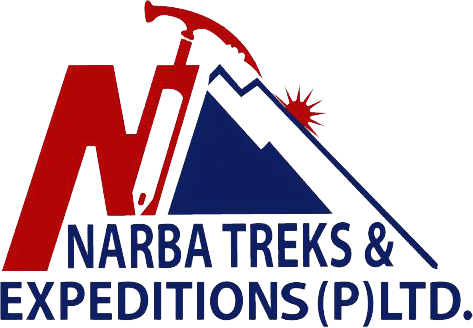Visa In Nepal
Detail
Nepal is a country known for its fantastic beauty. With rich cultural, natural, and geographical diversity, Nepal has a wide variety of tourism prospects. Offering various activities for travelers to engage in, Nepal can be the best place for travel. The famous Himalayas with several highest mountains of the world reside here.
Beneath these massifs lay a plethora of beautiful landscapes, sheltered in peace. The overwhelming natural beauty has also made this country known to be the trekker’s paradise. There are hundreds of adventurous trails built across these lands. Traveling here also gives you a chance to explore the unique cultures, traditions, and history of this country. All of these elements together form a destination worth traveling.
Nepal Visa and Entry Procedure
Getting a Visa for Nepal is easy. There are two simple ways one can apply for the Visa. The first one is issuing a Visa on arrival. Till now, Nepal has one international airport, the Tribhuvan International Airport. You can find the Department of Immigration stationed at the airport, which will quickly provide you with a tourist Visa. You can either complete a Tourist Visa form upon arrival or online at http://www.nepalimmigration.gov.np/. You will be requested to submit this form if you choose to fill it online. This form will be valid for submission only until 15 days. After completing the form, make the required payment to the bank. You must be aware that during peak tourism seasons, you may have to wait in long queues to get your Visa.
The next option is to issue a visa from the Nepalese diplomatic missions stationed in your home country. The fee charge for Visa is 30 USD for 15 days, 50 USD for 30 days, and 125 USD for 90 days. The extension cost is USD 3 per day, and the minimum extension days are 15. Visa for free is applicable for children under ten years old and citizens of SAARC nations (except Afghanistan). Upon issuing a visa, you must enter Nepal within six months of the issue date. Popular Destinations to Visit There are numerous places you can visit when you are here. Different places offer different activities. Some of the most popular activities to do in Nepal are; trekking, wildlife exploration, touring cities, adventure sports, and relaxing leisure activities. Inside Kathmandu valley, there are three cities: Kathmandu, Bhaktapur, and Lalitpur. Within these cities, you can find various important historical sites that hold tremendous value to the Nepali population.
Some of these sites are Boudhanath, Pashupatinath, and Swayambhunath. Apart from these, you can also visit the three famous durbar squares that once housed the great royal families of the three cities; Kathmandu, Lalitpur, and Bhaktapur Durbar Square. Outside the valley are cities like Pokhara, Chitwan and Lumbini, Bhairawa, and many more major locations: fascinating for their identities. There are over 10 UNESCO sites in Nepal, of which seven are located inside Kathmandu valley. You can find all these sites in the locations mentioned above. For those who wish to trek, the most popular regions to visit are Everest, Annapurna, Langtang, etc. Things to do in Nepal As mentioned above, there are various activities one can do in Nepal. The most popular activity most people like to do here is trekking. The rugged geographical persona of this country, along with its cultural beauty and various other attractive elements, makes this one of the best places to trek. Besides trekking, you can also explore the historic cities or engage in adrenaline exciting activities amidst the dangerous landscapes. When it comes to trekking, the Himalayas offer some of the most intriguing destinations to explore. Some famous trekking trails are Everest Base Camp Trek, Annapurna Base Camp trek, Langtang trek, Manaslu trek, etc. If you want to go a step further, you can also go peak climbing or even mountain expeditions. For those who wish to avoid the exhausting treks and have a simpler experience; they can opt for air tours such as the Heli flights or mountain flights. Trekking is not just about exploring landscapes, but it also gives an exposure to the rural communities of Nepal. Thus, for those who wish to know more about ethnic communities of Nepal, they can also have a cultural tour/trek in various regions of Nepal. The next best thing to do in Nepal is to go on jungle safaris in the dense jungles of the Terai region. Jungle safaris allow you to witness some of the rarest species of animals and plants. Last but not least are adventure sports activities such as paragliding, rafting, bungee jumping, skydiving, etc. You can get your desired adrenaline rush through these activities while simultaneously enjoying the natural beauty that surrounds these activities. Trekking Seasons in Nepal There are two seasons highly recommended for trekking in Nepal. Spring and autumn offer the best weather and trail conditions. Thus they are the best seasons for trekking. Spring occurs from February to April, whereas autumn occurs during October and November. During spring, the cold from the winter starts to decline, and the temperature gradually warms up. There is little to no chance of precipitation. Thus trekkers can enjoy a disturbance-free trip. Similarly, autumn also offers a pleasant atmosphere for trekking. As the rain settles, again in this season, there is little to no chance of precipitation. Views of the landscapes are clear, and trails are dry and easy to walk on. These two seasons are highly recommended for trekking, but this does not imply that trekking is not possible in other seasons. Trekking is possible in other seasons, mainly in raid shadow areas. The example treks are Dolpo Trek and Upper Mustang Trek. Altitude Sickness If you are planning to explore the Himalayas, you must be fully aware of altitude sickness. Altitude sickness is one of the most critical concerns regarding high altitude travel. It is a condition that affects those who cannot adapt to the high altitude either because their body is not capable of it or they ascended the altitude too fast. Above 3,000 meters, altitude sickness begins to affect the human body. If you are exploring the Himalayas, you will be traveling above this mark. Some common symptoms of altitude sickness are:
- Nausea and headache, vomiting, and Loss of appetite.
- Disturbed sleep/Insomnia
- Dizziness, lightheadedness, confusion, disorientation
- Weakness, fatigue, lassitude, heavy legs, swelling of hands, and face
- Shortness of breath and breathing irregularity
Altitude sickness is a very dangerous condition, and it has no immediate cure. If you experience any of these symptoms or you feel that you’re uncomfortable, you should immediately stop trekking and seek medical assistance. When one is affected by this, the only thing that saves them is descending back to low elevation. Medications such as Diamox or other altitude sickness medicines can ease the pain, but it does not cure the sickness. To prevent Altitude sickness, you must maintain a steady pace while ascending altitude. Make sure you hydrate your body, avoid tobacco or alcohol, and give your body less pressure as you can. Travel Insurance Getting insurance is important when it comes to traveling outside your country. Especially regarding high altitude traveling in Nepal, travel insurance is a must. Your travel insurance can help you cover costs for various unwanted circumstances such as trip cancellations, air/ambulance/helicopter rescue operations, health problems, and many other issues.
If, in unfortunate circumstances, you require helicopter evacuation or medical assistance while trekking at high altitudes, these services can be very expensive. Thus, travel insurance can come in handy. Meals and Accommodations Finding a hotel or lodge will not be a problem when you are in the city. There are plenty of options starting at just 5 USD. The quality of the service depends upon the prices you will be paying. There are also numerous restaurants offering a wide range of cuisines. You will stay in tea houses or lodges during trekking. These tea houses generally have a small yet cozy room. You can pay for a hot shower, and in some places, you may also have to pay to charge your electronic devices. You can also opt for home-stay in the villages during your trek. Keep in mind that during the peak season of trekking, tea houses and lodges may be fully occupied. In such a case, you can book your rooms plenty ahead or share rooms with fellow trekkers if they agree.
Banking, ATM’s and Money The Nepalese currency is the Nepali Rupee (NPR). There are plenty of currency exchange centers around the major cities. Some banks will also exchange foreign currency for you. ATMs and Banks are also widely available in urban areas. You can use your bank cards through the local ATMs and withdraw money at the standard rate fixed by the bank. Finding banks or ATMs will be difficult in rural areas. Thus, it is recommended that you take enough cash with you during your trek. Internet and Communication Internet and Communication services are now widely available in Nepal. A lot of the destinations you will travel will have internet services. If not, they will surely have phone network coverage. You can get a SIM card for 50 to 100 NRS at any local telecommunication store.
You can also make international calls with your local Sim, but these calls are expensive. Internet services will be available with Sim, and you can opt for various internet packages with your mobile phone.
Internal Flight Delays:
Due to the difficult topography of Nepal, the weather here is unpredictable, causing internal flight delays and cancellations. It is recommended that you arrange flights one or two days ahead of your tour plan. This way, if flights are delayed, you still have extra time to cover up for the shift in the itinerary.
Health and Safety Including Traveling alone in Nepal You must be very careful about your health and safety wherever you go. Although Nepal is known to be a safe and peaceful country, you have to keep an eye out for yourself. Some common health threats while traveling in Nepal malaria, dengue, diarrhea, fever, etc. You are strongly recommended not to eat or drink from random sources. Not all food providers are hygienic, and your body may not accept some types of food that are served here.
Crime rates have been low throughout the years in Nepal. There are occasional cases of pickpocketing and fraudulent activities. Make sure your belongings are safe and try to research for good prices regarding products or else you might end up paying a lot more than it’s worth.


